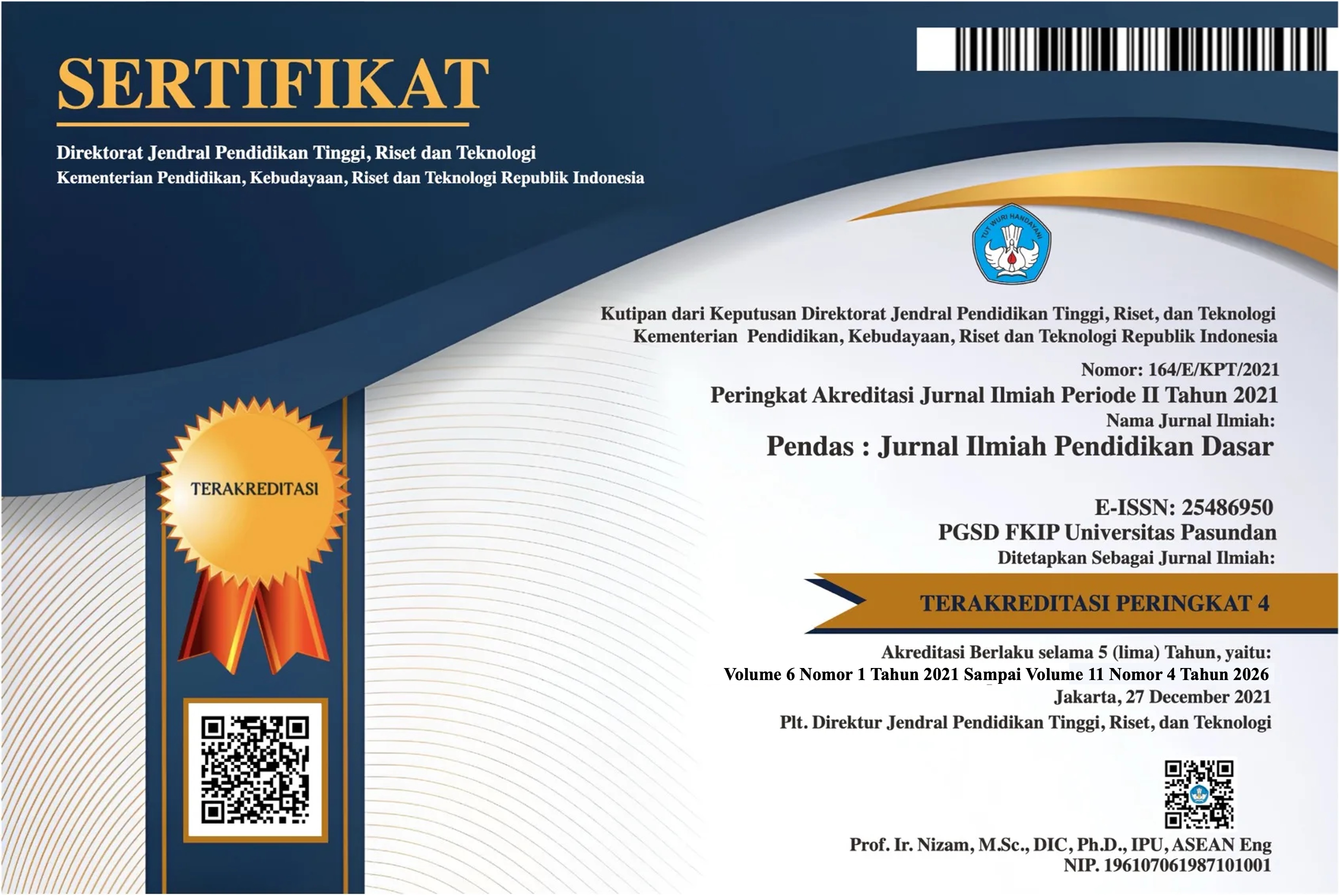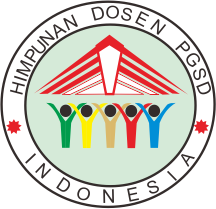MODEL PEMBELAJARAN STEAM UNTUK MENINGKATKAN HASIL BELAJAR IPA DAN KEAKTIFAN SISWA KELAS VI SD
DOI:
https://doi.org/10.23969/jp.v9i03.15809Keywords:
STEAM learning model, learning outcomes, and student activityAbstract
The low student learning outcomes and students' lack of activity during the learning process is because learning is still teacher-centered This research aims (1) to determine the application of the Science, Technology, Engineering, Art and Mathematics (STEAM) learning model, (2) to determine the increase in student learning outcomes after implementing the STEAM learning model in science learning, (3) To determine the increase in the activity of class VI students at SDN 1 Tenajar Kidul. after applying the STEAM learning model to science learning. The method used is Classroom Action Research (PTK), a design model from Kemmis and MC Taggrart. Where research is carried out in several stages, namely: planning, implementation, observation, then reflection. This research was applied to 25 grade 6 elementary school students consisting of 8 students and 17 female students. Improving learning outcomes and student activity using the STEAM learning model in science learning content for grade 6 elementary school has been carried out in 3 research cycles. This increase can be seen from the test results and is reinforced by observing student activity. The average pre-cycle student learning outcome was 54,84 with a completeness percentage of 40%, increased in the first cycle to 71,4 with a completeness percentage of 56%, and in the second cycle it increased to 73,2 with a completeness percentage of 72%, and was said to meet the indications of achievement in the third cycle on average. -average 88,24 with a completion percentage of 88%.
Downloads
References
Buinicontro, J. K. (2018). Gathering STE(A)M: Policy, Curricular, And Programmatic Developments In Arts-Based Science, Technology, Engeneering, And Mathematics Education Introduction To Special Issue Of Art Education Policy Review: STEAM Focus. Art Education Policy Review Journal. Volume 119, 2018 - Issue 2.
Khodijah, N. (2014). Psikologi Pendidikan. Jakarta: Prenadamedia Group.
Lambertus, Ambarsari, M., & Maonde, F. (2016). Pengaruh Sikap Siswa Terhadap Hasil Belajar Matematika Melalui Kombinasi Model Pembelajaran Kooperatif. Jurnal Pendidikan Matematika, 106.
Rahardjo. (2019). Bagaimana Cara Menggunakan Loose Parts Di STEAM? Diskusi kelompok Fokus Pendidikan Anak Usia Dini Di Indonesia. Jurnal Pendidikan Usia Dini.
Sejati. (2016). Penggunaan Metode Kooperatif Tipe STAD untuk Meningkatkan Hasil Belajar Matematika Siswa Kelas VA SDN 021 Tanjung Palas Kecamatan Dumai Timur . Jurnal Primary, 287.
Sinar. (2018). Metode Aktive Learning Upaya Peningkatan Keaktifan dan Hasil Belajar Siswa. Yogyakarta: Cv Budi Utama.
Sugiono. (2019). Metode Penelitian Kuantitatif Kualitatif dan R&D. Bandung: Alfabeta.
Susanto, A. (2016). Teori Belajar dan Pembelajaran . Jakarta: Prenadamedia Group.
Syukri, M., Halim, L., Meerah, T. S. M., & FKIP, U. (2013). Pendidikan STEM dalam Enterpreneurial Science Thingking ‘ESciT’: Satu Perkongsian Pengalaman dari UKM untuk ACEH.
Undang-undang. (2003). Undang-undang No. 20 Tahun 2003 Tentang Sistem Pendidikan Nasional. Lembaran RI Tahun 2003 No. 20 Jakarta : Sekertariat Negara.
Perignat, E. and Katz-Buonincontro, J. (2018). STEAM in Practice and Research: An Integrative Literature Review. Thinking Skills and Creativity 31: 31-43.
Wahyuningsih, E.S. (2020). Model Pembelajaran Mastery Leaarning Upaya Peningkatan Keaktifan dan Hasil Belajar Siswa. Yogyakarta: DEEPUBLISH.
Wilson, B. & Hawkins, B. (2019). Art and science in a transdisciplinary curriculum. In Judson, G. & Lima, J. (Eds). CIRCE Magazine: Steam Edition.CIRCE: The Centre for Imagination in Research, Culture & Education.
Zuryanty, Hamimah, Kenedi, A. K., & Helsa, Y. (2021). PEMBELAJARAN STEM DI SEKOLAH DASAR. Yogyakarta: DEEPUBLISH.
Downloads
Published
Issue
Section
License
Copyright (c) 2024 Pendas : Jurnal Ilmiah Pendidikan Dasar

This work is licensed under a Creative Commons Attribution 4.0 International License.


















